How to catch carp: the best tips for catching lots of big carp
Learn how to catch carp with our tip-filled expert guide
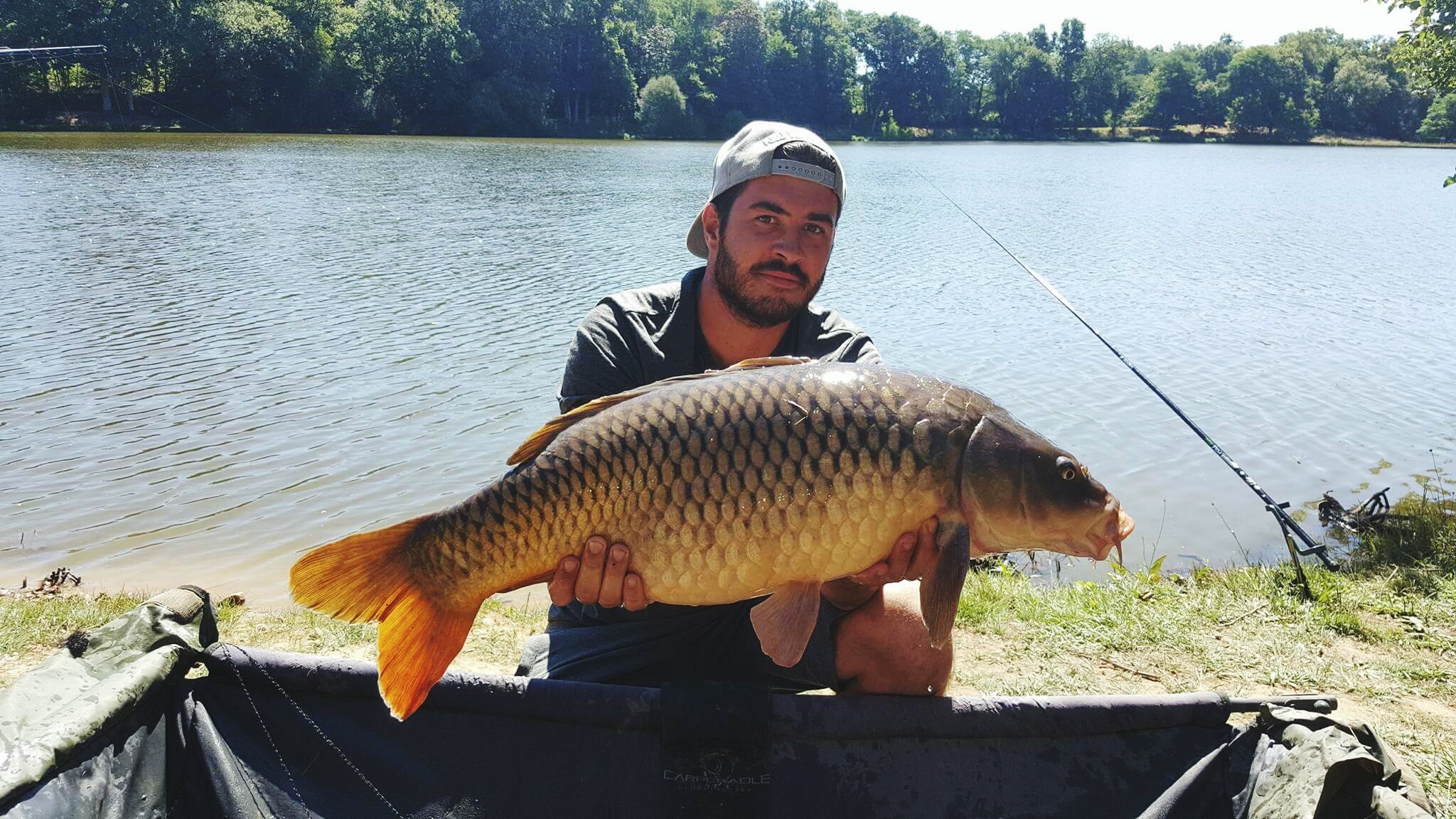
It's not surprising that anglers countrywide want to know how to catch carp – they’re among the biggest freshwater fish out there and can sometimes be a challenge for even the most experienced of fishermen.
Even a single-figure carp, under 10lb (4.5kg), is powerful enough to pull your rod in whilst your back is turned, and 20lb-plus (9kg) common and mirror carp are present in lots of lakes.
Whilst match anglers in the UK compete to put 100lb-plus (45kg) hauls of single-figure fish on the scales, week in week out, others target ‘doubles’ and 20-pounders (9kg), whilst big fish specialists might be chasing a particular 30lb (14kg), 40lb (18kg), 50lb (23kg), even 60lb-plus (27kg) heavyweight.
Ever wondered what the biggest carp ever caught in the UK is? Well, it currently stands at a whopping 75lb 2oz (34.08kg).
The question is, are they simple to catch? Well, they can be. Sometimes, it can be as easy as freelining a piece of bread crust in the right place at the right time, whilst at the other end of the scale you might feel the need to set a carefully laid 'trap' and spend a whole week on the bank waiting for your quarry to make a mistake.
In this feature we hope to highlight some of the different tactics you can use to target those 10lb-plus (4.5kg) fish – these are tactics that'll work for the biggest fish around, too, so don't be afraid to target even the giants with these tips. After all, the British record was held for many years by a carp caught Chris Yates on sweetcorn, proving that you don't always need the latest bait and rig to catch a specimen.
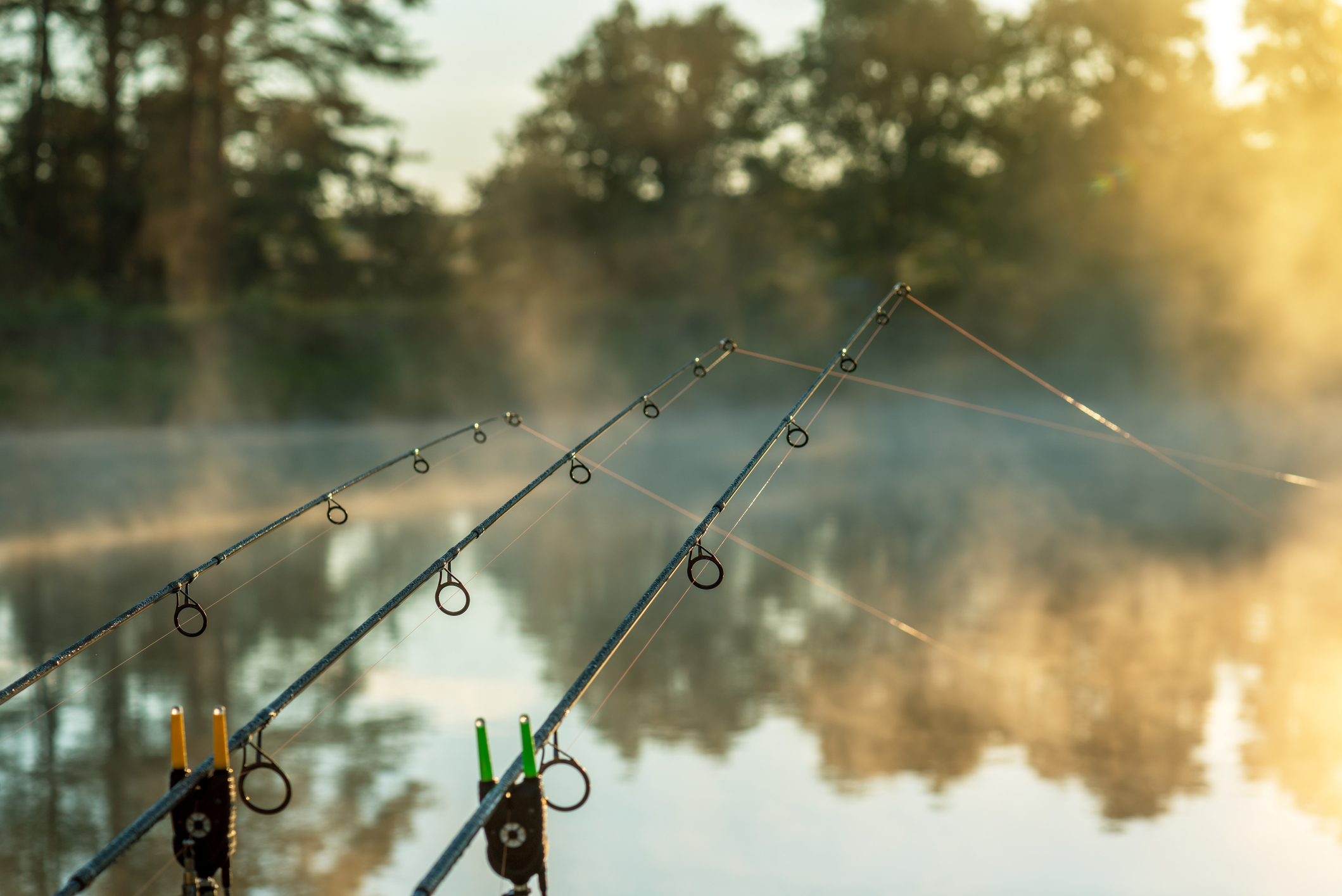
How to catch carp: what equipment do I need for carp fishing?
If you want to learn how to catch carp, the equipment you pack depends very much on the size of the carp you’re trying to catch.
Advnture Newsletter
All the latest inspiration, tips and guides to help you plan your next Advnture!
Carp float fishing rods, carp feeder rods and carp poles are all designed to be used for tackling single-figure carp in conjunction with 6-10lb (2.7-4.5kg) lines and size 10 to 20 carp match hooks. With care they’ll handle 10lb-plus (4.5kg) fish too should some biggies gate crash your swim.
For those larger specimens – fish closer to 20lb (9kg), even 30lb (13.6kg), or 40lb-plus (18.1kg) – you’ll need more powerful gear; 2.75lb-3.5lb test curve rods, coupled with freespool or big pit fixed-spool reels loaded with 10-15lb (4.5-6.8kg) lines are more the norm.
That's providing you’re not casting particularly heavy payloads or fishing snaggy terrain, in which case you're likely to need heavier tackle, maybe up to 20lb (9kg) line for big fish in snaggy lakes or rivers.
Bigger carp require stronger hooks, too, which won’t bend or straighten out during the fight, with the most popular sizes being 4 to 10. There are plenty of good carp hook patterns out there with a wide gape pattern a solid starting point for many baits and rigs. Note the barbed or barbless hook rules of your local water, too.
Anglers often buy two or even three matching rods and reels to fish with at the same time, as it can often be a ‘sit and wait’ game for those larger catches, meaning a degree of comfort is important. Think a comfy outdoor chair, 'brolly-style shelter and warm drinks.
For those bigger fish of 10lb (4.5kg)-upwards, a 42in or 50in specimen carp net is the best choice, it'll handle 20lb (9kg) or 30lb (13.6kg) catches if you get lucky or encounter a rogue catfish.
You also want to kit yourself out with a specimen carp unhooking mat, to unhook your fish on, or a cradle – some of the better cradles support a fish safely off the ground. This means unhooking and photographing is a lot easier and the fish can be returned in tip-top condition.
A floating sling is also recommended to retain carp in, safely in the water, whilst you get your unhooking kit or camera ready. Specialist carp unhooking mats and nets are required at many day tickets fisheries but make sure your gear is fully dried off before you visit another fishery to avoid spreading disease. Caring for your catch is important in carp fishing, so learning the best ways to do this is vital when targeting bigger fish.
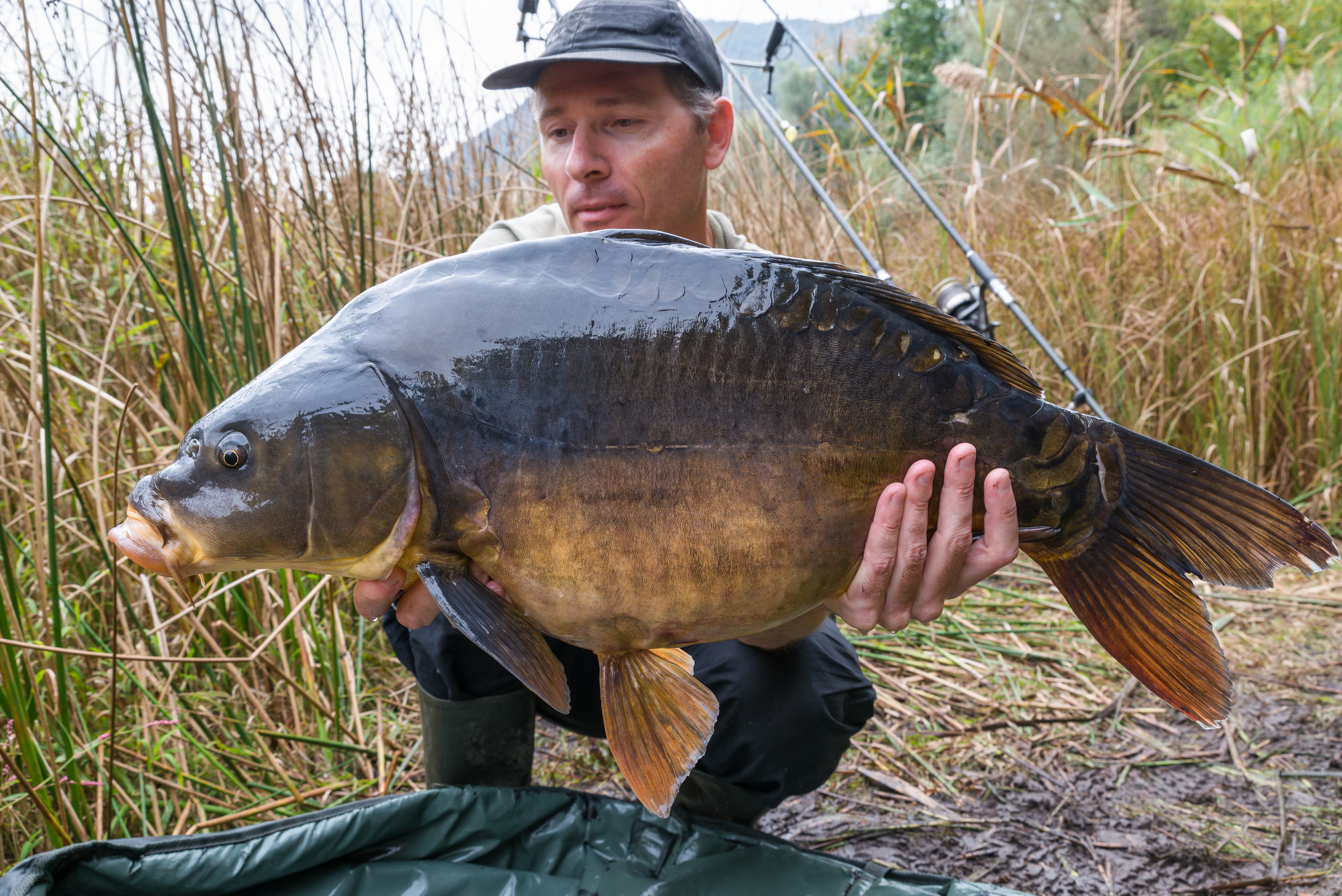
How to catch carp: what carp fishing waters to look for
A quick online search will tell you which lakes you can travel to to catch carp. Normally, you’ll only be paying for a day ticket, which can be anything between £5 to £25 (generally speaking, the bigger the lake's carp are, the higher the ticket price).
Other waters might be controlled by an angling club or angling society, which may offer a season or annual ticket, that allows you to go as many times as you want.
These can offer better value if they have some good carp waters under their control. You'll need to do your research, though. Again, online is a good starting point, as are are local tackle shops.
You may also come across carp syndicates which offer more exclusive fishing for what tends to be bigger carp – 20-30lb-plus (9-18kg). We warned, though, prices can run into four figures and there's often a waiting list for the best ones. Tougher still, but often much cheaper, are river and canal-type venues.
If you're starting out, a cheaper club water is a good option. Find one that has some bigger fish to target – say your PB is 10-15lb, pick a water that holds a few 20lb fish. This way you can progress your skills and build up your equipment as you target bigger fish without feeling out of your depth.
Check out: The best fishing spots: how to find the perfect place to go fishing
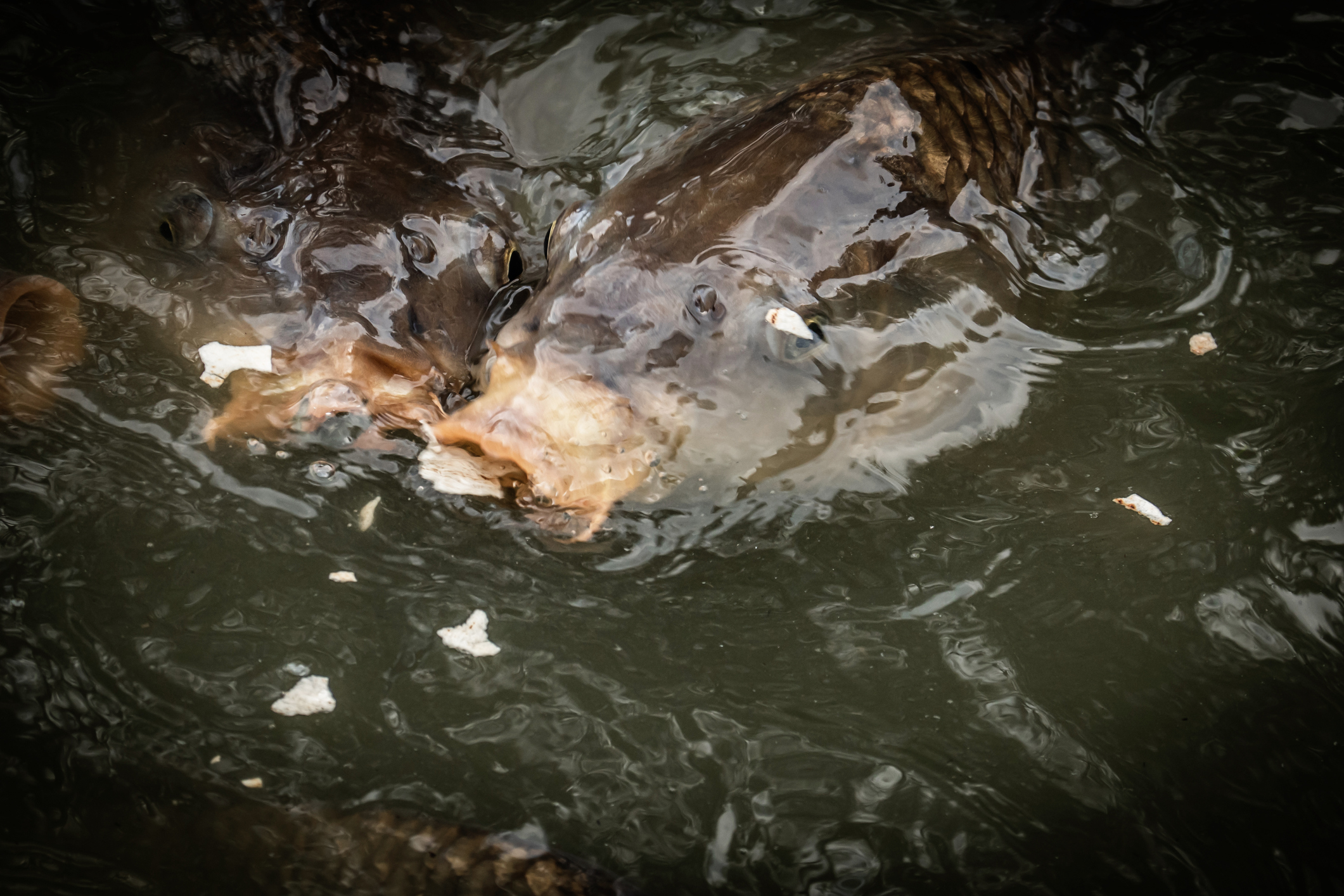
How to catch carp in ponds: what to look for and where to fish
On any water, especially small ponds where you might be learning how to catch carp, the best tool is your eyes, especially during the warmer months when they're more active.
Glasses with Polarized lenses will cut through the surface glare on a lake and allow you to see subsurface, and a cap with a good dark peak will help keep stray light from distorting your vision.
Be as stealthy as you can, as you might come across a group of carp right in the edge, and you don't want to spook them.
Bush and tree cover, weed beds, reed beds and island margins are all places that carp are attracted to, so they're worth a close look with your lenses on.
If you don't see anything, you can only go on where you think the carp might be, until you catch a more positive sighting.
If you're lucky you might see carp jump or 'crash' out in a particular area of open water – this area is definitely worth exploring. You also might be lucky enough to spot carp 'head and shouldering' too.
Sometimes cloudy water and a line of moving bubbles can be a sign that a carp has its head buried in the lake bed and is feeding on natural food like bloodworm or some bait left by another angler. The coloured water is caused by the fish tearing up the bottom as it feeds.
On hot days you might spot carp cruising around just under the surface or bow waving – look out for all these signs.
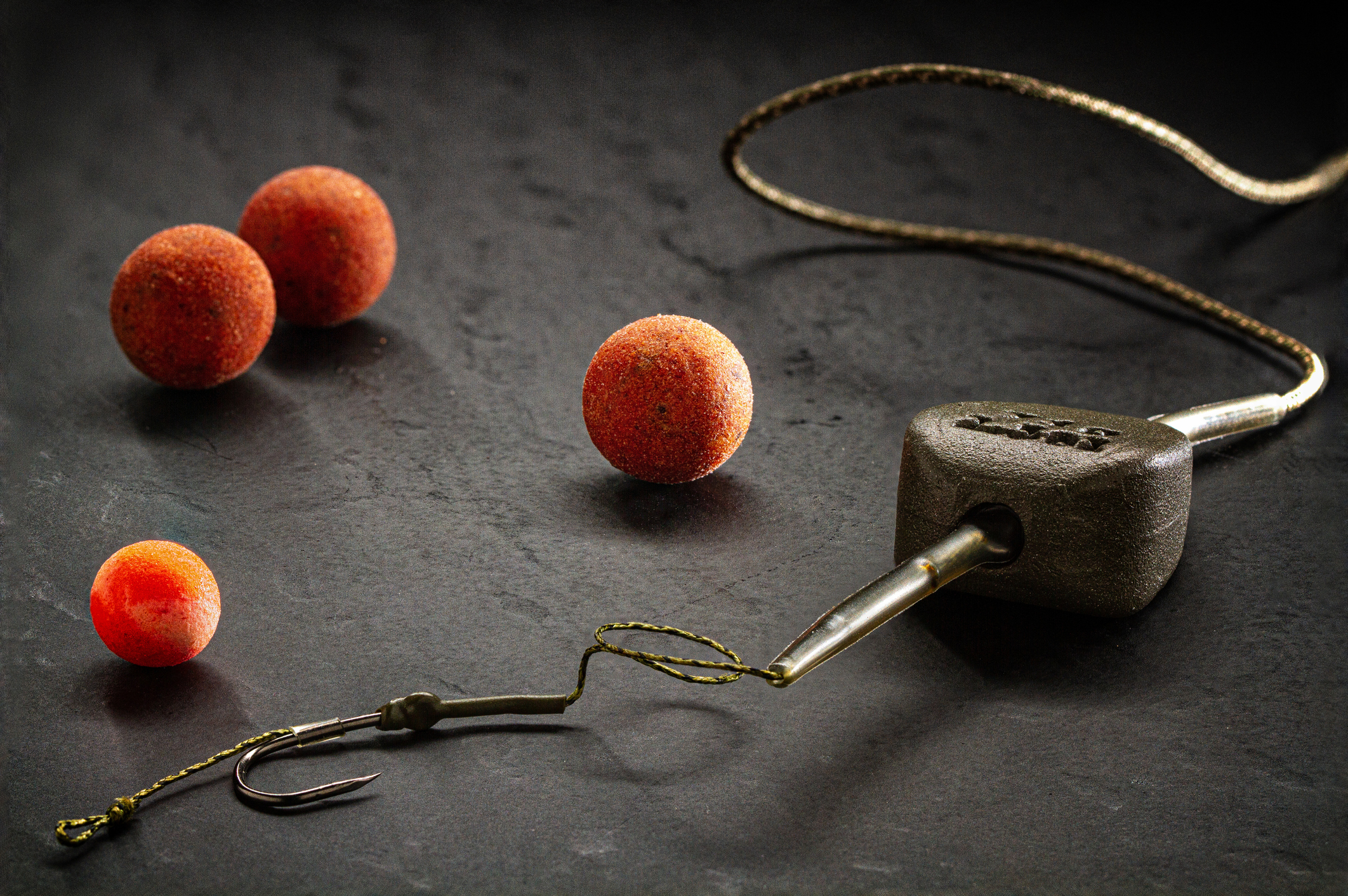
How to catch carp: the best methods for carp fishing
There are a multitude of ways to catch carp, the trick is to try and keep things simple and not overcomplicate matters when you're first learning how to catch carp.
If you see fish cruising around just under the surface on a hot day they might be a sucker for a floating bait like a pellet, trimmed down pop-up boilie or piece of bread crust.
Try feeding some bait to gauge their response and if they respond by slurping the occasional piece from the surface, try and build their confidence by feeding them some more 'freebies'. If they start taking them more readily, it's worth setting up some floater fishing tackle.
You could then try and freeline or use a controller float set-up to try and catch them.
If other anglers on the water you’re fishing on have been catching fish on the bottom, there's a good chance they could be using boilie or pop-up baits on a hair rig – baits and rigs that were designed specially for carp fishing.
You may be lucky enough to witness a fish being landed, in which case try and work out what the anglers might have been using. You may see a boilie or pop-up hook bait hanging from the rig when the fish was landed, or a pack of them amongst the angler's tackle.
If the anglers are friendly enough – don’t worry, most are – they'll tell you if they're using boilies or pop-ups, but don't expect them to tell you the exact type or flavour. There are some things a carp angler likes to keep a secret!
In the colder water temperatures of winter, maggots – one of the most popular fish baits – can come into their own for carp. Regular helpings of maggots in a holding spot for winter carp can trigger even the laziest fish to feed.
Try the same tactics in the summer and you'll be catching every species under the sun, however, from micro roach and perch to tench and bream. But in winter, when these nuisance species aren’t so active, using maggots can be a deadly method for carp.
Check out: 9 top tips for how to catch carp in winter
A good tip when carp fishing is not to follow the crowd. Carp learn by association and if everyone on a particular water is fishing the same way or with the same bait, the fish can learn very quickly to associate it with danger, especially if they’ve been caught a few times.
And carp will change their habits accordingly, perhaps not eating a particular bait so readily, if they’ve been caught on it a lot. Use your eyes, try and watch how fish respond to particular baits, and adjust your tactics accordingly.
If you can find some feeding fish, introduce some of your bait and gauge their response. There's nothing better than seeing carp respond positively to what you're using. At least you'll know they're eating your bait.
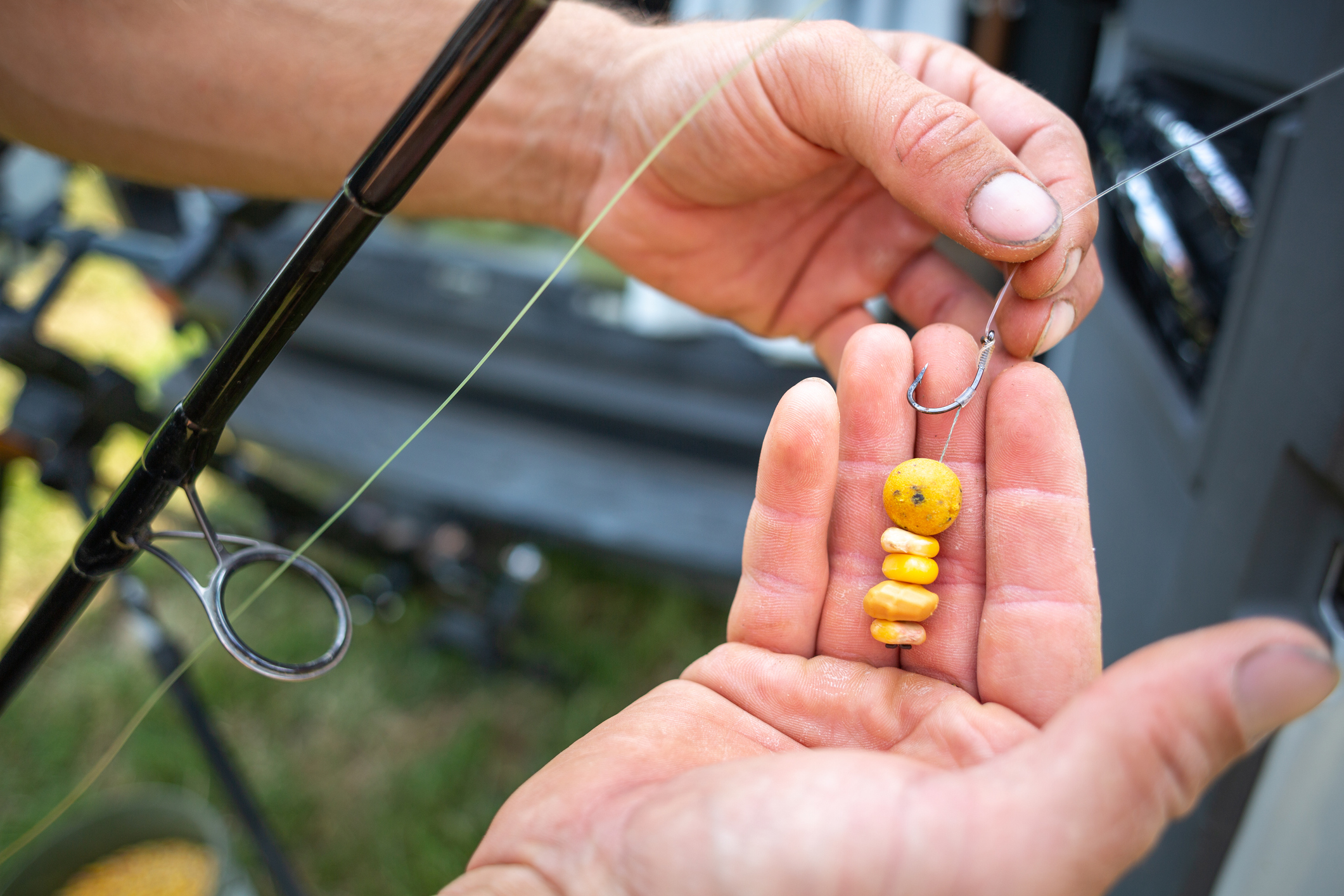
How to catch carp: carp fishing with sweetcorn or maize baits
Fishing with sweetcorn is a great option if you're learning how to catch carp. Fish of all sizes love corn baits plus it's cheap, easy to use and works all year round. The best way to use use corn for carp fishing is to target areas close to the bank – margins, lily pads, overhanging trees, snags and so on – with a small handful of corn as loose feed and a couple of grains on a specialist hair rig.
Corn is pretty light and won't fly far even in a catapult, so it lends itself well to a margin-fished bait. It's also visual so patrolling carp will find it quickly, but don't feed too much as a big bed of bright yellow corn might scare off wary big carp in shallow water. An cup full over the top of the hook bait is sufficient to attract and hold a carp or two.
A good tip for using corn to catch carp is to use fake sweetcorn on a hair rig. Plastic sweetcorn on a hair rig is readily eaten by fish as they can't tell the difference but it can't be swallowed because it's attached to the line. It does offer several advantages when used as a hook bait; smaller fish can't peck it off the rig, it can be purchased in floating varieties to make a buoyant popped-up hook bait and you can add a different colour to make it stand out. Try a white or pink grain along with a yellow grain to make a stand-out hook bait that carp will home in on.
For loose feed, canned sweetcorn is great and frozen works well too, just make sure it's defrosted before use so it sinks. Bulk frozen bags are a great way of getting cheap loose feed for a carp session, especially mixed with some sinking pellets and crushed boilies. Maize is sweetcorn's bigger tougher cousin and requires proper preparation before use, but it can be a great bulk loose feed on a large water. Maize is also a good hook bait as it's tougher than 'corn but still has the same attracting qualities.
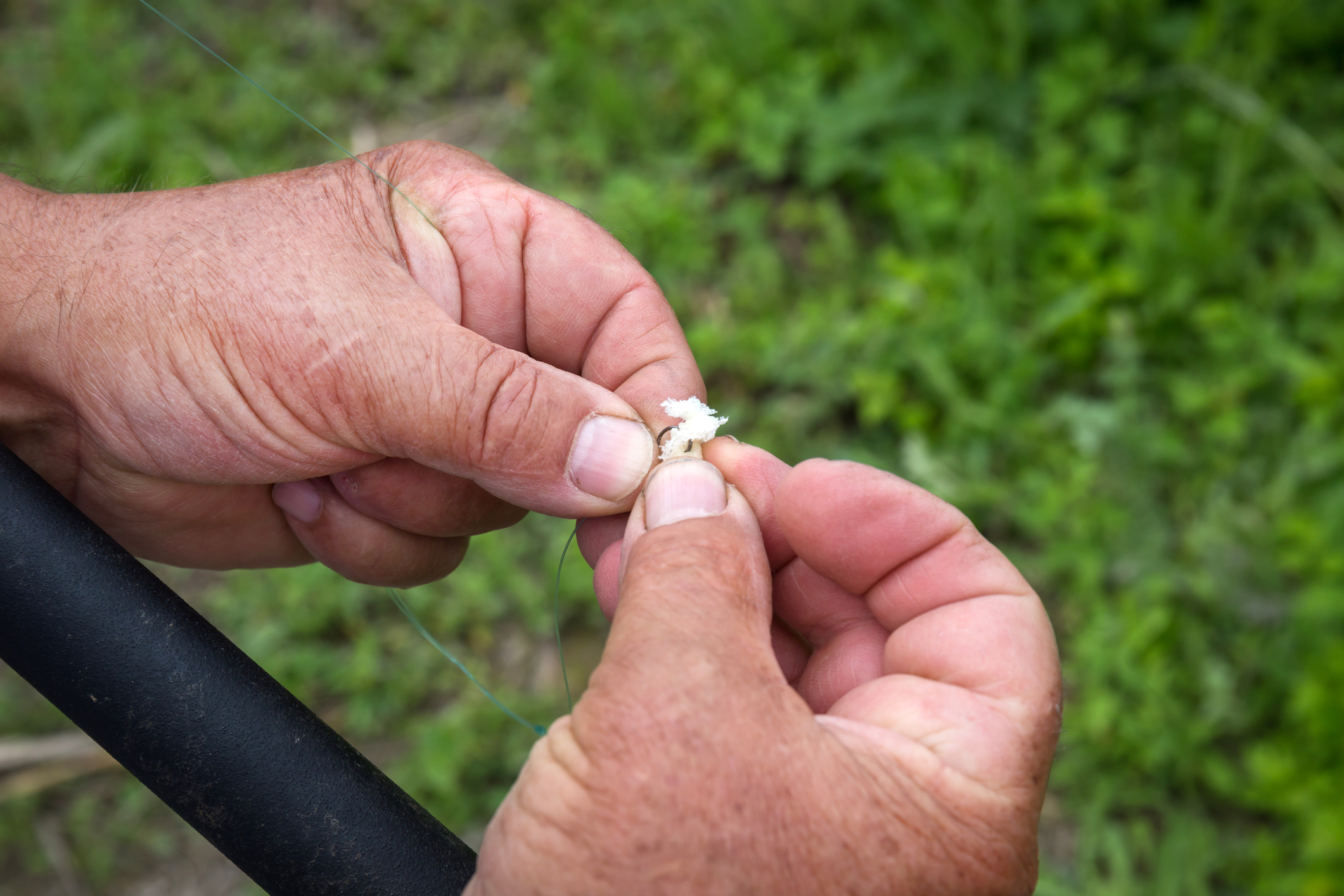
How to catch carp: the best way to use bread baits for carp fishing
Bread is one of the oldest baits used in carp fishing and can be utilised in a few different ways for a very effective bait. The most common way bread is used in carp fishing is for surface fishing with the crusty part of the loaf. This part floats and a walnut-size piece lightly hooked and threaded on has been the downfall of many a margin-hugging carp.
Another way to use bread for carp fishing is in flake form. Get a fresh white loaf and pinch a walnut-size lump from the white flakey bread inside the loaf onto the hook, with a little extra pressure from your fingers around the shank of the hook so it stays on during the cast. Cast without any weight on the line, a method known as freelining, this bread flake bait will sink slowly and rest on top of any weed or soft mud, ready for a patrolling carp to suck it up in one go.
A different way of using bread is to make a paste from the bread by adding water and kneeding the mixture until it form a smooth dough, as if you were making pizza. You can add all sorts of smelly ingredients to make the bait more attractive to carp – try sweet flavours like coconut and peanut butter, or savoury ones like curry and chilli additives – and a binder like egg to make it hold together. A well put together paste bait is a deadly margin or float-fished bait for carp as the soft bait disperses flavour readily and is easily taken in by a feeding carp.
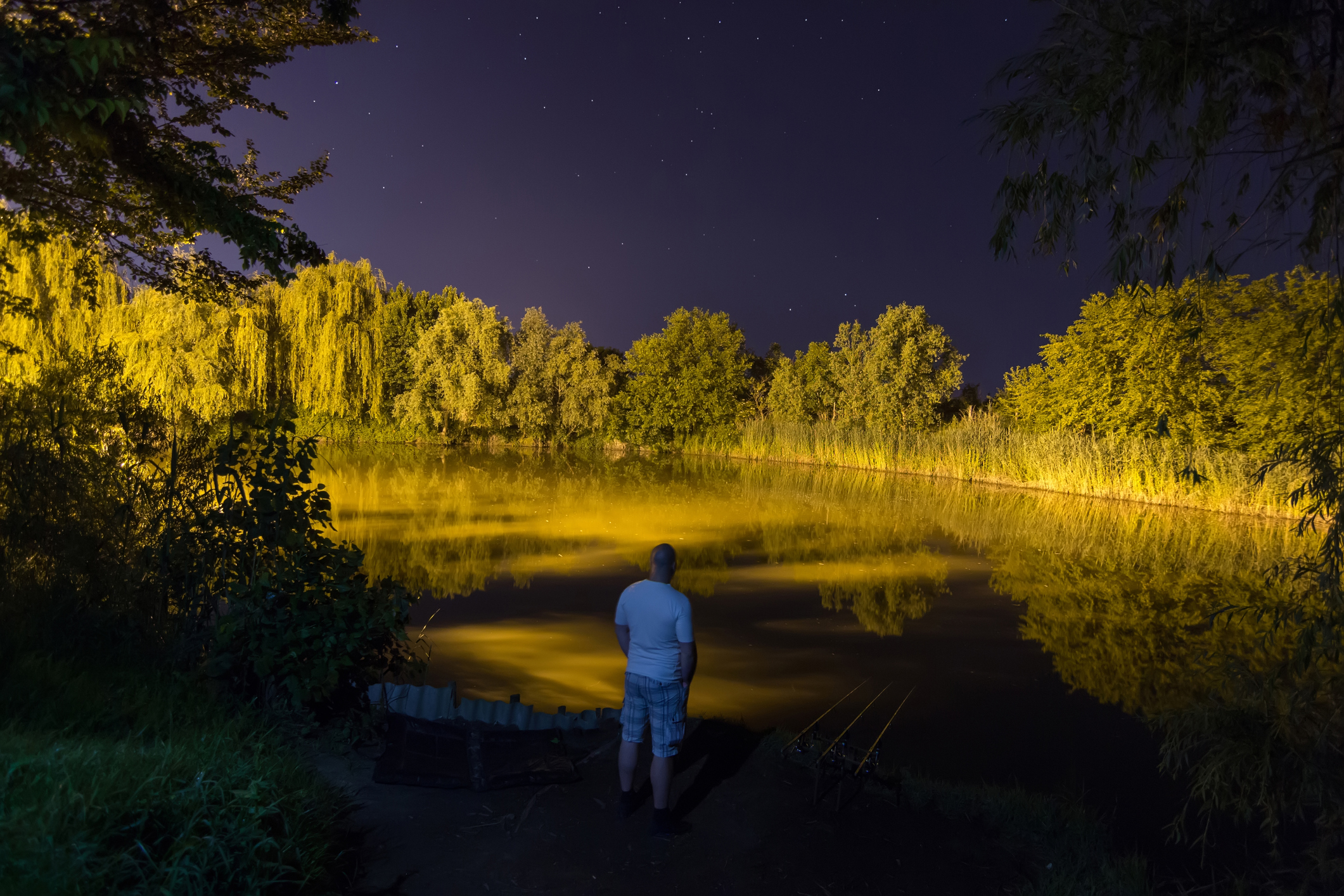
How to catch carp: night fishing for carp
You can night fish all year for carp in the UK and plenty do. Sometimes the fish prefer to feed under the cover of darkness when bank activity might be quieter.
The carp might choose to come closer in after dark, even patrolling the margins of a lake, mopping up the feed that might have been left by day anglers. And the night angler can take advantage of this.
In the summer, it might not actually be dark for very long, the period after last light to first light can go surprisingly quickly. You'll need a bed chair to sleep on and a sleeping bag, some form of shelter, a head torch or two and a means of making a hot drink. Fishing gear-wise, bite alarms are a must for big carp fishing and a remote receiver is useful for keeping nearby when you want to be awoken by a bite.
Overall, learning how to go night fishing for carp is going to be a useful skill for targeting those bigger fish, so getting used to your set-ups and using the correct equipment will pay off in the long run.
